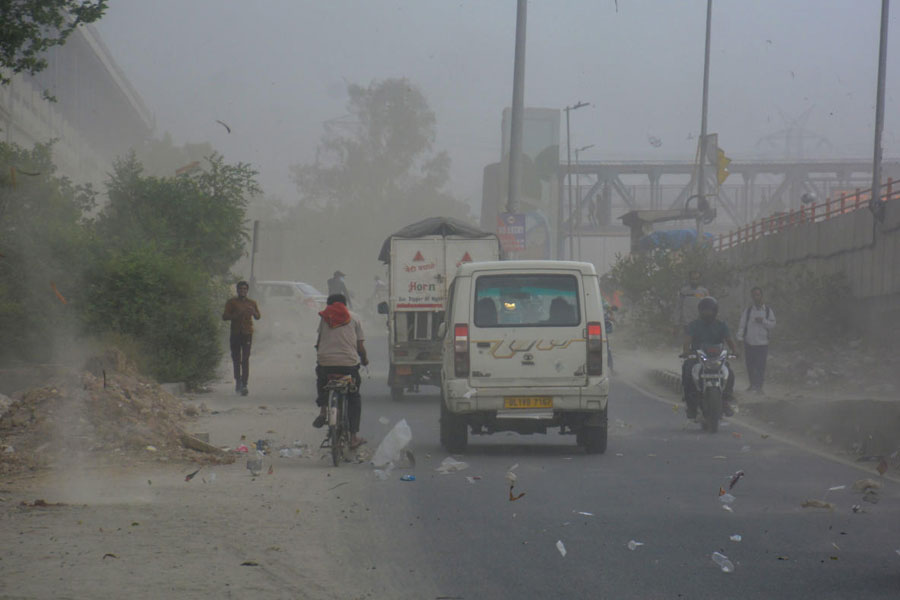Many Calcuttans have been flooded with messages over the past few days warning them about impending rain or storms.
The sender’s name on the mobile screens: National Disaster Management Authority (NDMA).
All good.
Only, most of the messages are multiple weeks too late.
A Sovabazar resident got the following message on Tuesday morning: “Thundersquall with wind speed 60-70 kmph along with light to moderate rain and lightning very likely to affect over some parts of Kolkata, North 24-Parganas and South 24-Parganas districts during next 2-3 hours from 18:30 hrs IST of today, 09-05-2024. People are advised to stay in a safe place.”
More than one Calcuttan said such messages prompted them to act accordingly, only to be stumped later.
“You do not tend to read till the end. When you see a rain alert, you act accordingly,” said a Behala resident who received a similar message on Tuesday afternoon. His daughter goes to swimming classes every Tuesday but he asked her not to after seeing the message.
It was only late in the evening that he read the full message and realised that the alert was 12 days late.
In June last year, many Calcuttans had complained of another set of misleading messages from the same sender. Then, the alerts were not in sync with the official forecast of the Met office, but there was no confusion on the dates.
Now, the city sky is mostly overcast and multiple weather systems are at play. All the more reason for people to read the first line and believe it is an alert for the same day.
An official at the IMD headquarters in Delhi said the messages from the NDMA are sent via the common alert protocol (CAP), aimed at minimising fatalities because of weather events.
“Met alerts are sent to the NDMA headquarters in Delhi, as well as the relevant state disaster management authorities, before they are disseminated to individuals via mobile network service providers,” he said.
The CAP is part of the Sachet National Disaster Alert Portal.
The website says: “National Disaster Management Authority under chairmanship of Hon’ble Prime Minister of India has envisioned a CAP based Integrated Alert System on Pan India basis. The project involves near real-time dissemination of early warning through multiple means of technology using geo-intelligence.”
Col Kirti Pratap Singh, advisor (Ops and Communication), NDMA, told this newspaper on Tuesday that the central agency has made the platform to be used by all the states and the content of the messages are sent by the State Disaster Management Authority (SDMA).
“The message issuing authority should include respective details in the message as per an SOP, which appears to have not been done by the SDMA. We will get into the details. Thank you for bringing to our notice,” Singh said.
He iterated that these messages “are being sent by the SDMA”.
G.C. Debnath, senior consultant to the State Disaster Management Authority in Bengal and former deputy-director general of IMD, Calcutta, also said the Met alerts are sent to the NDMA and relevant SDMAs. “We feed the input into the CAP system. The system is then supposed to send it to citizens via mobile network service providers,” he said.
“A backlog at the end of the service providers could be one of the reasons” for the late alerts, he suggested.
Calls from this newspaper to state disaster management minister Javed Khan went unanswered.










